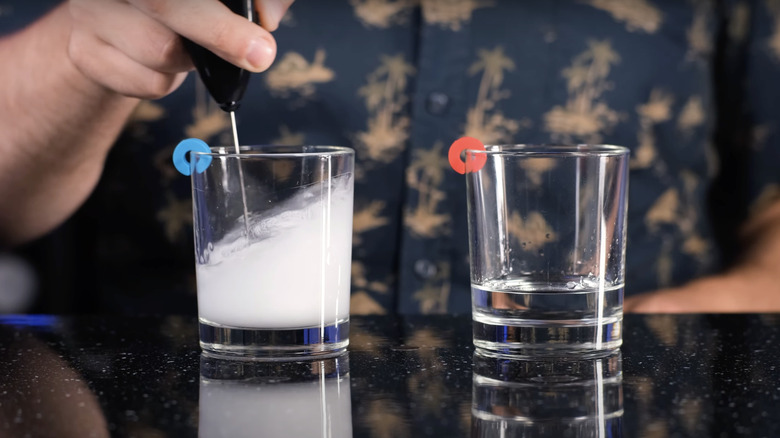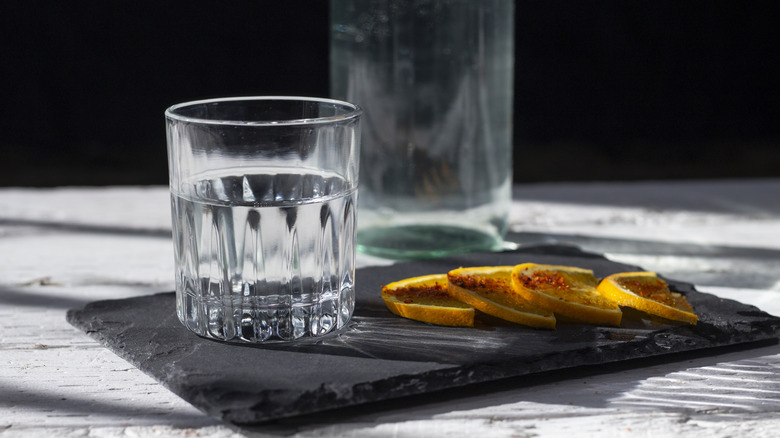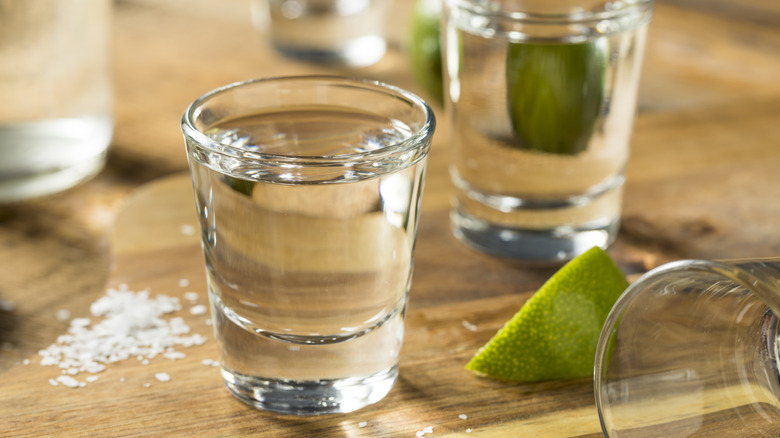Break Out Your Frother Tool For The Smoothest Tequila Of Your Life
Believe it or not, oxygen can greatly affect alcohol's flavor. Think of it as another ingredient, working alongside mixologists and bartenders to refine a drink that tastes a little rough around the edges. You may be familiar with using cocktail shakers, one of the 14 essential tools for an advanced home bar, to introduce aeration to your drinks. However, a tool you're likely less familiar with, at least in the context of drinking tequila, is the humble milk frother. Most people know that the buzzing whisk offers an easy way to step up your hot chocolate game, but did you know it's also the key to a smoother-tasting spirit?
Yes, you can use a milk frother to turbocharge your aeration. Don't worry, the electric tool will not add foam to your shots. Instead, the rapid movement of air through the liquid accelerates the natural mellowing and evaporation of the alcohol's harsher flavors, allowing the fermented agave's sweeter side to emerge.
Setting up the perfect tequila sipper
To undertake this project, choose a glass or cup with extra room to accommodate the liquid as it moves. In other words, don't try this in a shot glass.
Don't worry about chilling your bottle before you imbibe, either. Retailers and experts suggest serving your tequila at room temperature, about 69 to 70 degrees Fahrenheit, to allow your palate to discern all the flavorful nuances. Treat it similarly to wine when you drink, savoring and even "chewing" your tequila by swishing it around your mouth to achieve even more aeration.
After you've frothed the tequila for about 30 seconds or so, make sure to settle in and start sipping. The effects wear off over time, so this isn't the moment to go chop citrus. The benefits may diminish because the introduced air fizzes away, lessening its creaminess and any potential changes the bubbles might impart on the aroma.
Tasting notes to look out for
Once you've set up your frothing station, it's helpful to think about the scents and tastes you might detect from the alcohol. Likely, you'll swirl a serving of blanco or silver tequila, which is the lightest in color and undergoes the least amount of aging. Reposado and añejo tequilas, which are more amber in color, are carefully rested or aged in barrels and are probably not going to be your liquor of choice for a frothing experiment.
At the store, you might notice a range of prices for blanco tequila. Some brands offer a rough and ready spirit made for mixing, while others offer an elevated agave experience for connoisseurs, so don't write it off. Moreover, different bottles can vary widely across a spectrum of aromas, from pepper to citrus to herbaceous.
Depending on what you taste after frothing up the smoothest tequila of your life, those flavors can help inform your next cocktail or snack pairing. A vegetal or spicy batch might lend itself well to a fresh salad or spiced nuts. On the other hand, a warm and citrusy ferment would complement seafood and acidic sliced fruits.



